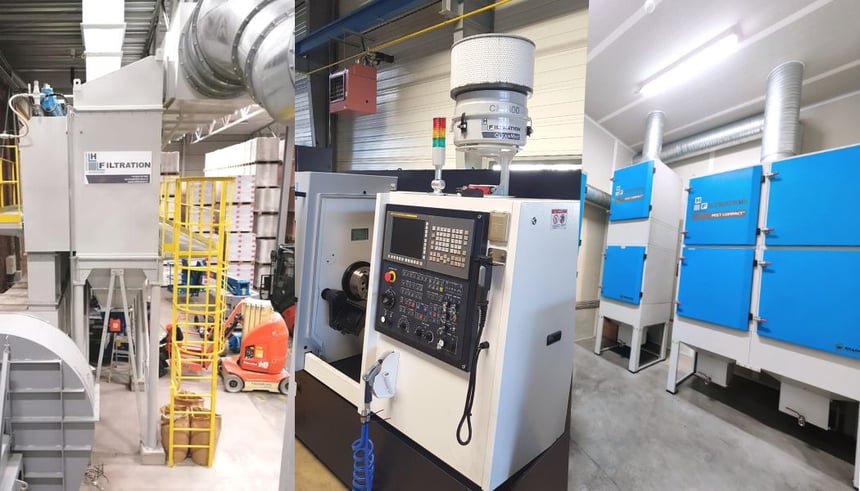Talking about industrial air filtration is rather generic as there is no single type of pollutant, so there are different technologies and operating mechanisms for plants. How many types are there? We can mainly distinguish three and we will discuss them in this article.
Dry fumes and dust filtration
Fumes and dust generated during industrial processes can be extremely harmful to human health and the environment. This problem is common to many production sectors, which is why there are many filtration systems designed for this type of pollutant that causes numerous pathologies.
In this context, there are a series of centralized systems equipped with suction points located within the environment and, specifically, near machine tools that emit harmful dust and fumes during their operation. These take the residues from the polluting source and, through a system of ducting and suction, push them into the filtration area where, by exploiting the principle of physical separation, the air is purified and then expelled back into the atmosphere.
Physical separation can take place by means of cartridge filters, bag filters, pocket filters or through the centrifugal force of a separating cyclone. Depending on the particle size of the dust and its concentration, the most suitable plant technology and sizing can be identified.
Oil mist extraction
Many companies are faced with the need to filter oil mists developed during production processes in which whole oils and emulsions are involved.
In order to abate these pollutants, it is important to turn to tested and safe technologies used in the construction of plants specifically for oil mist abatement. Centrifugal filters of small dimensions, therefore intended for on-board installations, modular solutions for centralized plants ideal for processing emulsions, or for operations on heavier production sources using whole oil and generating smoke, the most suitable are filters that exploit the principle of coalescence.
Volatile organic compounds abatement
Volatile organic compounds (VOCs) identify pollutants whose molecules contain different functional groups and together are capable of different physical and chemical behaviour, although they share a high volatility. Organic solvents such as thinners and paints, but also liquid hydrocarbons containing chlorine, fluorine and sulphur, for example, fall into this category.
Volatile organic compounds can be classified into three types:
- Anthropogenic compounds originating from human activities, e.g. from oil and combustion, the main exponents of which are benzene, toluene, methane, carbon tetrachloride and ethanol.
- Biogenic compounds of natural origin, such as terpenes contained in plant essential oils.
- Anthropogenic and biogenic compounds, such as isoprene.
For their abatement, venturi scrubbers can be used to wash them down with water or reagents, or regenerative thermocombusters.
In the light of this, it is therefore easy to understand how it is not enough to rely on industrial air filtration systems, but rather to identify the type of pollutant and, consequently, find the solution best suited to one's needs.



